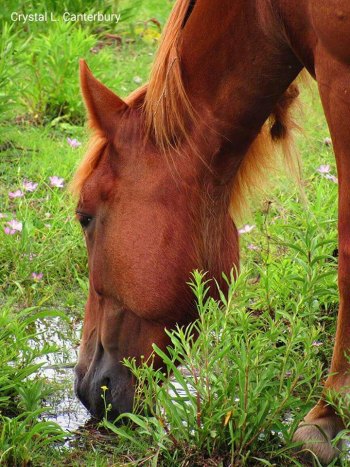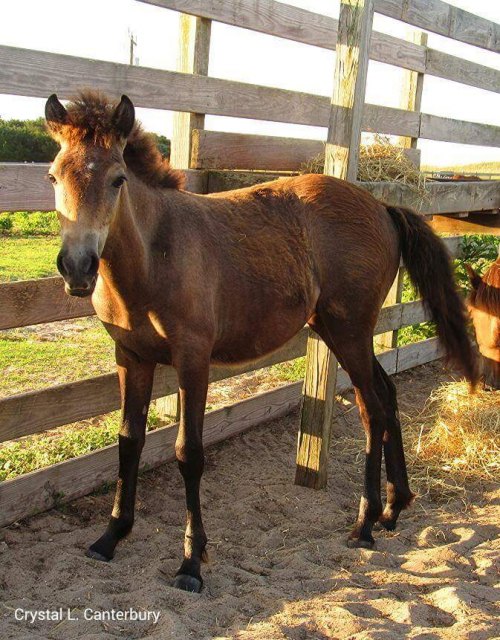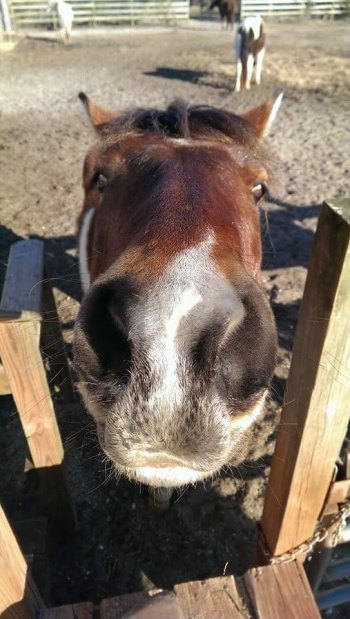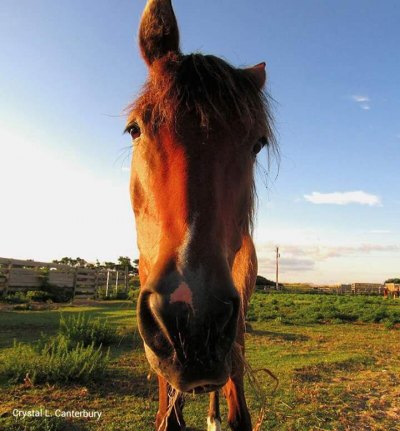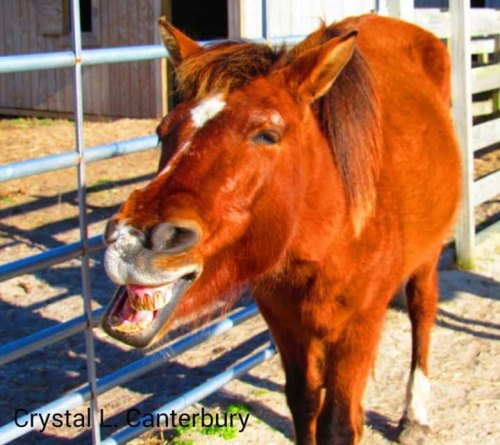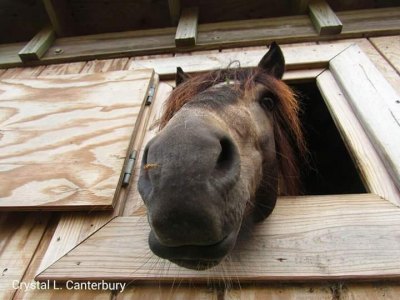Seven miles north of Ocracoke village is a 188-acre plot of land, which is lined with and divided into sections by a wood fence. Behind the wooden fence live sixteen Ocracoke Banker ponies, descendants of Spanish mustangs who were shipwrecked just off-shore several hundred years ago. The shipwrecks occurred up and down the barrier islands along the East Coast, and in some places the descendants still roam freely.
The Ocracoke Ponies have a more detailed, different story.
Prior to 1846, Bodie Island, Hatteras Island, and Ocracoke Island were all connected. During the 1500’s, 1600’s, and 1700’s European explorers sailed to North America, establishing colonies in the New World. With them the colonists brought food, clothing, other supplies, and, in many cases, livestock. Many ships ran aground just off-shore of the barrier islands, and in an effort to lighten the load and free the ship from sandbars in shallow water, heavy items were tossed overboard. In 1585, the English ship Tiger (while searching for what is known as The Lost Colony) ran aground near Ocracoke Island. Many believe Sir Richard Grenville, the captain, unloaded his Spanish mustangs onto the island to lessen the weight of his vessel. This is supposedly when the once tame horses adapted to their new, unfamiliar environment and became wild.
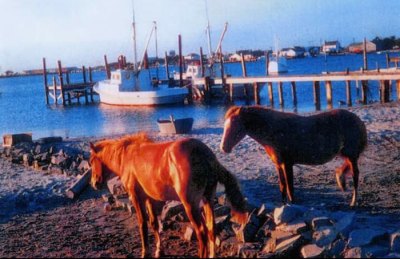
Documentation shows horses have without a doubt been on Ocracoke Island since the 1730’s, when Europeans first created a settlement. Records indicate as many as 300 horses roamed the Ocracoke area at one time. Many horses, through shipwrecks and load-lightening, ended up inhabiting the Outer Banks, roaming freely around the long ribbon of sand.
A massive hurricane in 1846 changed the geography of the Outer Banks, carving Hatteras and Oregon inlets, but the ponies remained. As more people began to settle on the islands, they began incorporating the ponies into their lives. By having the ponies pull carts loaded with heavy cargo, supplies, and large catches of fish, transporting goods became easier and more efficient. Later, the United States Lifesaving Service (U.S.L.S.S.) used the wild ponies for general beach patrols, as well as a way to carry equipment to and from shipwrecks, plus haul salvaged goods from shipwrecks back to the villages. During the Second World War, the United States Coast Guard (U.S.C.G.) had a small herd of ponies which they used to conduct beach patrols, searching for German u-boats that were patrolling the East Coast, just off the Outer Banks.
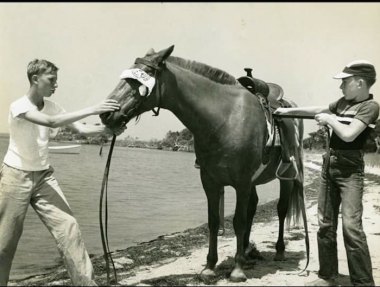
After the war, many Ocracoke residents began staking claim on some of the wild ponies. Annually, on the Fourth of July, residents would ride to the north of Ocracoke, and drive the ponies into the village where they would be temporarily penned. Once in the pens the ponies would be sorted, and any new ones were branded. From there some were broken for personal use around the village, while others were sold. The rest were returned to their wild habitat and the pens were taken down until the next year.
As recently as the 1950’s, the Ocracoke ponies served another unique purpose. The Ocracoke Boy Scouts, who are still an active organization on the island, cared for the ponies. The Troop had the distinction of being the only mounted troop in the country, a distinction they held for several years.
Highway 12 was paved in 1957, and as a result of increased vehicle traffic, ponies were being injured and killed. The ponies were also over-grazing, and in response to that factor and the increasing traffic accidents, a law was passed in 1959 to permanently pen Ocracoke’s Banker ponies. They have remained penned since, and have been cared for by the National park Service since the early 1960’s.
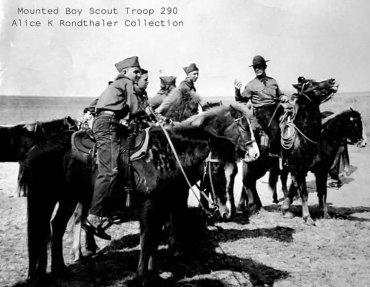
The current herd has sixteen members, one of whom was born in February of 2015. On top of their obvious natural appeal and fascinating history, the Ocracoke Banker ponies have different physical characteristic from their wild counterparts. They have a different number of vertebrae and ribs (much like Spanish mustangs), plus they are shaped differently, have different coloring, are generally smaller in size, and weigh less than other horses. They are currently cared for by Laura Michaels, a National Park Service employee, who holds the position of Wrangler/Animal Caretaker, and a handful of volunteers.
During severe weather events, Laura makes sure the ponies are fed and safe. The ponies are not locked in their barns during severe weather, which allows them to roam around their pastures and take care of themselves and each other. Laura assesses any damages to the barns, fences, mangers, and utilities once the weather clears. She is also responsible for training the volunteers who feed the ponies, as well as general maintenance around the pasture and keeping an eye on the health of each pony.
The National Park Service created the “Adopt-a-Pony” program, allowing anyone to figuratively adopt ponies from the herd. Each adoption fee of $25.00 goes directly to the Ocracoke herd and is used to purchase food, supplies, and provide medical care.
